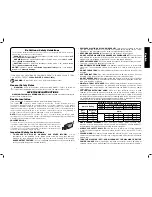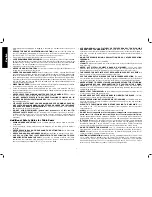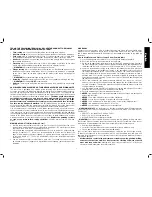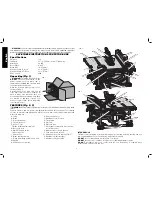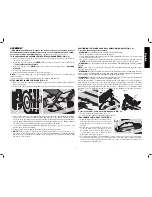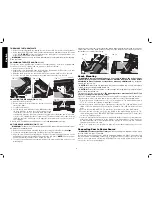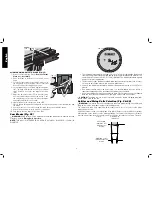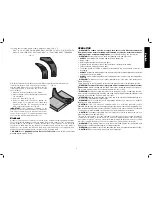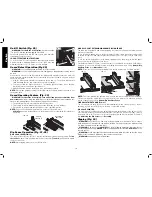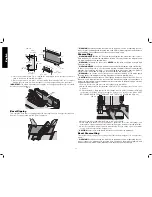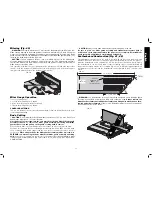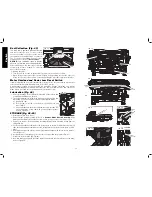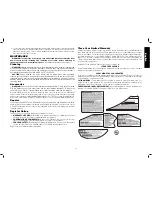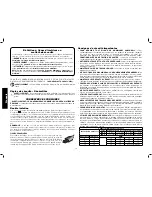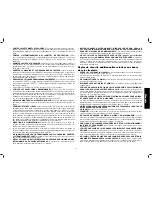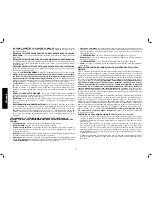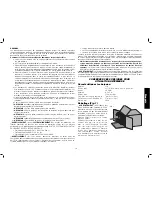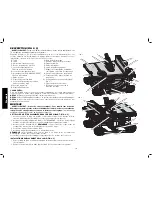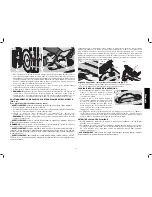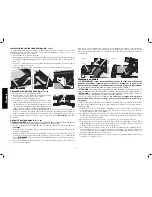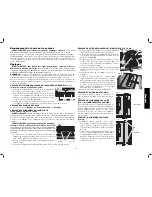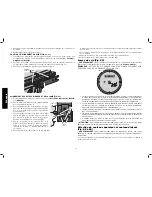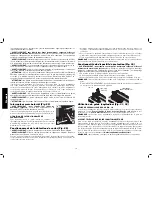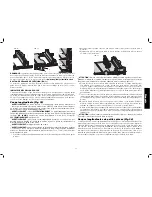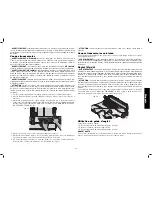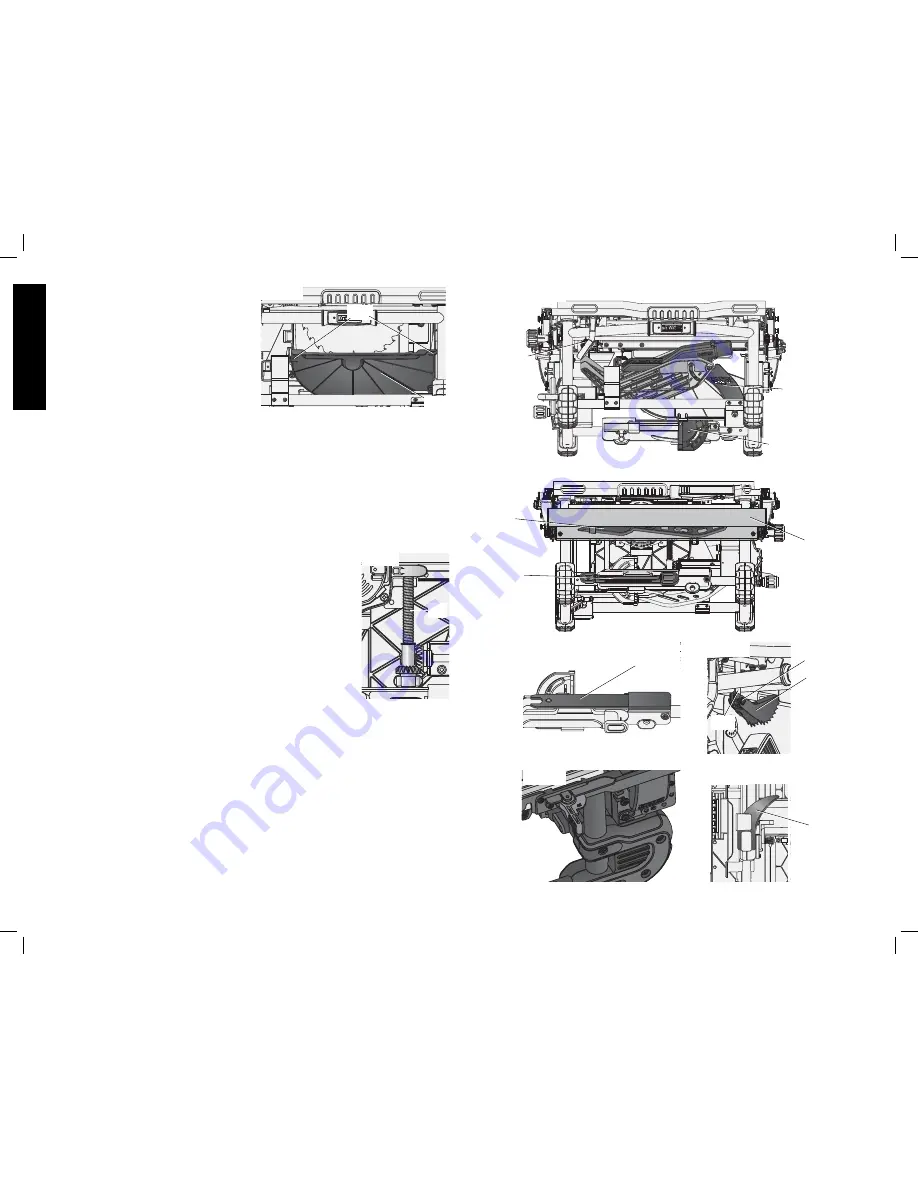
14
English
Dust Collection (Fig. 43)
This table saw is equipped with a dustshroud
and dust collection port. For best results,
connect a vacuum to the port at the rear of
the saw and on the guard using a Y-connector.
The Y connector is available as an accessory
at additional cost. Refer to
Accessories
.
NOTICE:
Care should be taken to position
hoses to not interfere with cutting operation.
After extended use, the saw’s dust collection
system may become clogged. To clear the
dust collection system:
1. Unplug the saw.
2. Turn the saw on its side, so the bottom, open part of the unit is accessible.
3. Open the dust access door (XX) shown in Figure 43 by pressing the the side clips (YY).
Clean out the excess dust, and re-secure by pushing the side clips completely into place.
Motor Overload and Power Loss Reset Switch
If power is interrupted by a circuit breaker trip, or power is lost, the saw contains a power loss
reset switch feature that will automatically reset to OFF position.
Circuit breaker overload is often the result of a dull blade. Change your blade on a regular
basis to avoid tripping your breaker. Disconnect the saw from power source and check your
blade before re-setting the circuit breaker and continuing to saw.
Lubrication (Fig. 44)
1. All motor bearings are permanently lubricated at the factory and
no additional lubrication is needed.
2. The height adjustment screw may require periodic cleaning and
lubrication. If you have difficulty raising or lowering the blade:
a) Unplug the saw.
b) Turn the saw on its side, so the bottom, open part of the unit
is accessible.
c) Clean and lubricate the height adjustment screw threads (ZZ)
on the underside of this saw with general purpose grease.
Refer to Figure 44.
STORAGE (Fig. 45–50)
1. Attach push stick (V) to fence.
2. Remove blade guard assembly (K). Refer to
Remove Blade Guard Assembly
.
Slide
blade guard assembly into holder as shown, then turn lever counterclockwise to lock.
3. Depress the stem on the anti-kickback assembly (N) to allow the assembly to slide from the
riving knife slot.
4. Position anti-kickback assembly into the storage hole as shown. While depressing stem (II)
slide the anti-kickback assembly across the storage bracket (A1) and release pin to lock into
place.
5. Slide blade wrenches (U) into pocket until yellow button aligns with hole to secure in place,
refer to Figure 47.
6. Insert guide bar of miter guage (J) into pocket, then pivot and snap in place (Fig. 45).
7. Wrap cord in this location (A2, Fig. 46).
8. Non thru-sawing riving knife (W) slides in place underneath the saw, below the cord wrap.
Refer to Figure 50.
FIG. 43
XX
YY
ZZ
FIG. 44
FIG. 45
FIG. 46
FIG. 47
FIG. 48
FIG. 49
FIG. 50
J
R
N
II
A1
W
K
N
V
U
A2


